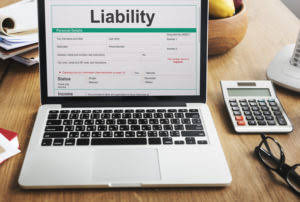
To help, take a look at these fixed and variable costs examples. Fixed costs are expenses that remain constant regardless of your current sales revenue or spending. Period costs are simply all of the expenses that are not product costs, such as all selling and administrative expenses. It is important to are salaries a fixed cost remember that period costs are treated as expenses in the period in which they occur.
- The amount of raw materials and inventory you buy and the costs of shipping and delivery are all variable.
- On the other hand, all sunk costs are fixed as they can’t be changed with changes in production.
- This means they will have to either find a larger vehicle and incur higher gas expenses or take a second car, which will at least double the fixed gas cost.
- During planning and budgeting, it is important to know what your fixed costs are and how they affect the profitability of the company.
- Proper management of fixed costs ensures operational efficiency and long-term profitability.
Fixed vs. variable costs

Variable expenses are tied in to your business’s productivity. The amount of raw materials and inventory you buy and the costs of shipping and delivery are all variable. The more in demand your products are, the more the costs go up. Fixed costs include Cash Flow Management for Small Businesses rent, utilities, payments on loans, depreciation and advertising.

What are Semi-Variable Costs?
- Properly accounting for both direct and indirect labor costs ensures that pricing remains competitive and covers all incurred expenses, ensuring profitability.
- The more fixed costs a company has, the more revenue a company needs to generate to be able to break even, which means it needs to work harder to produce and sell its products.
- Variable costs, on the other hand, fluctuate with changes in production volume.
- These expenses are not directly tied to the production of goods or services but are necessary for the business’s overall operation.
A business is sometimes deliberately structured to have a higher proportion of fixed costs than variable costs, so that it generates more profit per unit produced. Of course, this concept only generates outsized profits after all fixed costs for a period have been offset by sales. They earn the same amount regardless of how your business is doing. Employees who work per hour, and whose hours change according to business needs, are a variable expense. Piecework labor, where pay is based on the number of items made, is variable – so are sales commissions.
Factoring in Labor Costs: Cost of Living vs. Production Costs
- These costs are critical for maintaining a physical presence and ensuring efficient supply chain operations.
- These costs often include items such as interest, depreciation, insurance, and labor costs.
- These items do not constitute compensation paid to the employee.
- They must consider the financial implications of salary adjustments, including the impact on the company’s bottom line and the potential for increased employee engagement and productivity.
Get free guides, articles, tools and calculators to help you navigate the financial side of your business with ease. Not sure where to start or which accounting service fits your needs? Our team is ready to learn about your business and guide you to the right solution. Variable costs are flexible, so analyze spending patterns and identify areas to save. If you’ve ever flown on an airplane, there’s a good chance you know Boeing. The Boeing Company generates around $90 billion each year from selling thousands of airplanes to commercial and military customers around the world.


These costs remain constant over a specific time frame or activity level, making them predictable and essential for a company’s financial planning. Fixed costs are also referred to as fixed expenses or overhead expenses. Variable costs, on the other hand, fluctuate with changes in production volume. Understanding the distinction between fixed and variable costs is crucial for making informed decisions within a business. Fixed costs appear prominently in financial statements, reflecting a company’s long-term financial commitments. In a market economy, understanding fixed costs is crucial for strategic planning and investment decisions.
- This characteristic distinguishes them from variable costs, which vary according to volume.
- Therefore, the rent and salary paid to every employee of companies every month remains fixed and can be considered a fixed cost example.
- If a worker works for more than six hours per day, the extra amount paid to the worker is a variable cost because the worker is free to determine how many extra hours to spend working.
- The CEO’s salary is likey to rise in line with general wage increases, but it remains a fixed cost.
Why are fixed costs important?

Insurance premiums also fall under the category of fixed costs. Whether it’s property insurance, liability insurance, or health insurance for employees, these premiums are usually paid on a regular basis and remain constant over the policy period. Insurance provides a safety net ledger account for businesses, protecting them from unforeseen events that could otherwise result in significant financial losses. In the world of financial analysis and performance, understanding fixed and variable costs is essential for effective decision-making. Businesses must monitor and control these costs to maintain profitability and meet the expectations of investors.